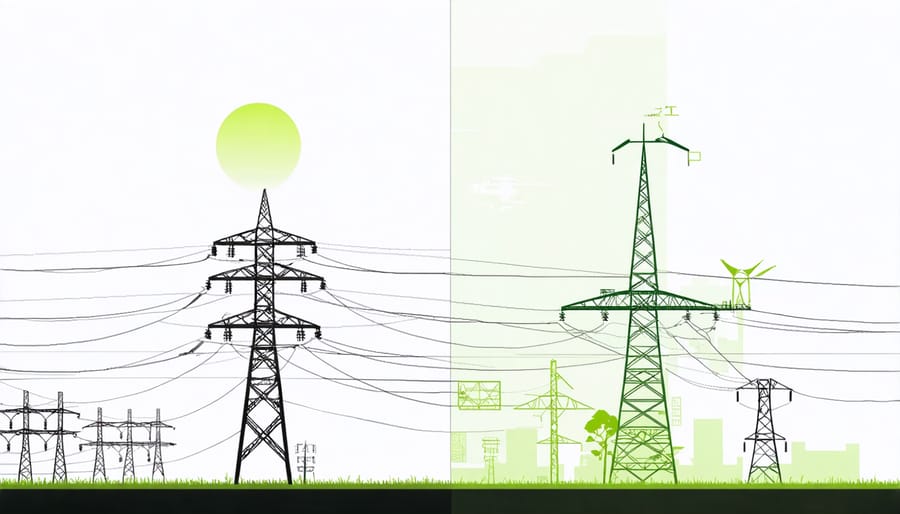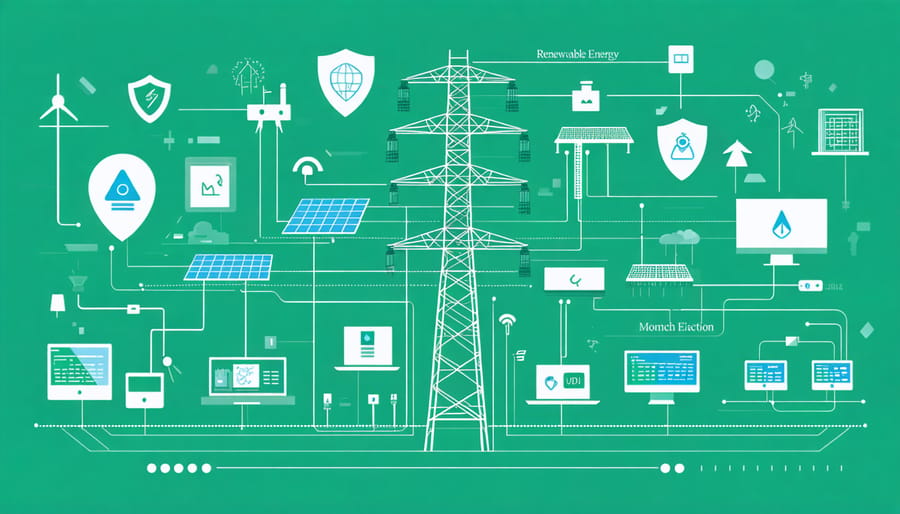Building resilient infrastructure demands a fundamental shift in how we design, construct, and maintain our critical systems. The devastating impacts of climate change, cyber threats, and aging systems have exposed vulnerabilities that threaten essential services and community stability worldwide. Forward-thinking organizations now recognize that infrastructure resilience extends beyond physical fortification to encompass adaptive capacity, redundancy, and rapid recovery capabilities.
Modern resilience frameworks integrate advanced materials technology, predictive analytics, and distributed systems architecture to create robust networks that can withstand multiple simultaneous disruptions. These approaches have demonstrated success in diverse settings, from coastal cities hardening their power grids against extreme weather to rural communities developing self-healing water distribution systems.
The economic imperative for resilient infrastructure is equally compelling. Research indicates that every dollar invested in resilience yields a minimum four-dollar return through reduced disaster recovery costs and maintained operational continuity. Leading municipalities and private sector entities are increasingly adopting comprehensive resilience strategies that coordinate physical infrastructure improvements with social and economic resilience initiatives.
This integrated approach to infrastructure resilience represents not just risk management, but an opportunity to reimagine how our built environment serves and protects communities while adapting to emerging challenges. Success requires collaborative effort between engineers, policymakers, and community stakeholders to develop solutions that are both technically sophisticated and socially equitable.
The Evolution of Grid Infrastructure Security
Traditional vs. Smart Grid Systems
Traditional power grids, characterized by one-way power flow from centralized generation facilities to end-users, are increasingly proving inadequate for modern resilience requirements. These conventional systems often struggle with demand fluctuations, have limited real-time monitoring capabilities, and are vulnerable to widespread outages during natural disasters.
In contrast, smart grid systems represent a revolutionary approach to power distribution, incorporating advanced digital communications, automated controls, and distributed energy resources. These modern systems enable bi-directional power flow, real-time load balancing, and predictive maintenance capabilities. Smart grids can automatically isolate damaged sections during disruptions, preventing cascading failures and maintaining power to critical facilities.
The integration of smart meters, sensors, and advanced monitoring systems allows utilities to detect and respond to problems before they escalate. This predictive capability, combined with self-healing technologies, significantly reduces downtime and maintenance costs. Additionally, smart grids readily accommodate renewable energy sources and energy storage systems, enhancing grid flexibility and environmental sustainability.
For communities seeking infrastructure resilience, smart grid implementation offers superior reliability, improved energy efficiency, and enhanced disaster response capabilities compared to traditional systems.

Key Vulnerabilities in Modern Infrastructure
Contemporary infrastructure faces multiple critical vulnerabilities that demand immediate attention from industry professionals. Our research identifies several key challenges, including aging physical components, cybersecurity threats, and climate-related risks. Recent assessments of modern infrastructure vulnerabilities reveal that approximately 40% of urban systems remain susceptible to cascading failures.
Power grid susceptibility represents a primary concern, with interconnected systems creating potential single points of failure. Digital control systems, while enabling greater efficiency, introduce new attack vectors for malicious actors. Additionally, many existing structures weren’t designed to withstand the increasing frequency and intensity of extreme weather events.
Supply chain dependencies present another significant vulnerability, as demonstrated during recent global disruptions. The integration of smart technologies, while beneficial for operations, has expanded the attack surface for cyber threats. These challenges are compounded by workforce gaps in specialized technical roles and insufficient redundancy in critical systems.
Understanding these vulnerabilities is crucial for developing effective resilience strategies and implementing appropriate protective measures.

Building Resilient Grid Architecture
Advanced Monitoring and Control Systems
Modern infrastructure resilience heavily depends on sophisticated real-time monitoring systems that enable proactive maintenance and rapid response to potential threats. These advanced systems integrate IoT sensors, artificial intelligence, and machine learning algorithms to continuously assess structural integrity, environmental conditions, and operational parameters.
Key components typically include distributed sensor networks that measure vibration, temperature, pressure, and displacement. These sensors communicate with centralized control systems through secure networks, providing comprehensive data analytics and predictive maintenance capabilities. Building Information Modeling (BIM) integration enhances this monitoring by creating digital twins that allow operators to visualize and analyze infrastructure performance in real-time.
Smart control mechanisms complement these monitoring capabilities by automating responses to detected anomalies. For example, automated shutdown protocols can activate during seismic events, while smart building management systems adjust environmental controls based on occupancy patterns and weather conditions.
Recent implementations have demonstrated significant improvements in infrastructure resilience. The Port of Rotterdam’s digital transformation project, for instance, employs advanced monitoring systems that have reduced maintenance costs by 20% while improving operational efficiency by 15%. Similarly, Singapore’s Smart Nation initiative utilizes integrated monitoring networks to enhance urban infrastructure management and emergency response capabilities.
Distributed Energy Resources Integration
The integration of distributed energy resources (DERs) represents a fundamental shift in building resilient infrastructure systems. Modern microgrids, incorporating solar panels, wind turbines, and energy storage solutions, enable communities to maintain power during grid disruptions while reducing dependency on centralized power systems.
Recent implementations demonstrate that facilities equipped with DERs can achieve up to 30% greater resilience during extreme weather events compared to traditional grid-dependent structures. For example, the Marcus Garvey Village in Brooklyn successfully deployed a microgrid system combining solar panels, fuel cells, and lithium-ion batteries, providing reliable power to residents during multiple outages.
Smart inverter technologies and advanced control systems are essential components for seamless DER integration. These systems enable real-time load balancing, automated switching between grid-connected and island modes, and optimal resource utilization. Industry standards like IEEE 1547-2018 now provide framework guidelines for DER interconnection and interoperability.
Project managers should consider several key factors when implementing DERs:
– Local renewable resource availability
– Peak load requirements
– Storage capacity needs
– Grid interconnection requirements
– Maintenance and operational considerations
The cost-effectiveness of DER systems continues to improve, with installation expenses declining by approximately 70% over the past decade. Combined with enhanced reliability and reduced carbon emissions, DERs are becoming increasingly vital components of resilient infrastructure development.
Cybersecurity Measures
In today’s interconnected infrastructure landscape, robust cybersecurity measures are essential for protecting critical systems from evolving digital threats. Modern infrastructure projects must incorporate multi-layered security protocols that safeguard both physical assets and digital networks. Advanced threat detection systems, coupled with digital twin technology, enable real-time monitoring and rapid response to potential security breaches.
Infrastructure operators should implement comprehensive security frameworks that include encrypted communications, secure access controls, and regular vulnerability assessments. Critical components include:
– Advanced firewalls and intrusion detection systems
– Regular security audits and penetration testing
– Secure authentication protocols for all access points
– Continuous monitoring of network traffic patterns
– Automated threat response mechanisms
– Regular software updates and patch management
Additionally, organizations must develop incident response plans that outline clear procedures for addressing security breaches. These plans should include backup systems, redundant communication channels, and defined roles for emergency response teams.
Training programs for personnel at all levels are crucial, as human error remains a significant vulnerability in cybersecurity systems. Regular drills and updates to security protocols ensure that staff maintain readiness and familiarity with current best practices, creating a culture of security awareness throughout the organization.
Community Integration and Response
Public-Private Partnerships
Successful infrastructure resilience often hinges on effective collaboration between public entities and private sector organizations. These partnerships leverage the expertise, resources, and innovative capabilities of both sectors to create more robust and adaptable infrastructure systems.
Utilities and local communities are increasingly forming strategic alliances to enhance grid reliability and emergency response capabilities. For example, Pacific Gas & Electric’s Community Wildfire Safety Program demonstrates how utility providers can work with municipalities to implement advanced monitoring systems and rapid response protocols during natural disasters.
These partnerships typically operate on multiple levels: infrastructure planning, implementation, maintenance, and emergency response. Local governments provide regulatory framework and community access, while private sector partners contribute technical expertise and operational efficiency. The arrangement allows for cost-sharing, risk distribution, and improved service delivery.
Key success factors include:
– Clear delineation of roles and responsibilities
– Transparent communication channels
– Shared risk management strategies
– Joint investment in technology and infrastructure
– Coordinated emergency response plans
Recent developments show an increasing trend toward data-sharing agreements between utilities and municipalities, enabling better predictive maintenance and faster incident response. These collaborations often extend to educational initiatives, helping communities understand their role in infrastructure resilience and emergency preparedness.
The most effective partnerships maintain flexibility to adapt to changing conditions while ensuring consistent service delivery and community protection.
Emergency Response Protocols
Effective emergency response protocols form the backbone of resilient infrastructure management, requiring a well-coordinated approach to disaster response and recovery. These protocols typically follow a three-phase structure: immediate response, stabilization, and long-term recovery.
The immediate response phase focuses on life safety and critical system preservation. This includes rapid deployment of emergency response teams, activation of backup systems, and implementation of predetermined evacuation procedures. Command centers must be established within the first hour of an emergency, utilizing digital monitoring systems and real-time communication networks to coordinate response efforts.
During the stabilization phase, teams conduct comprehensive damage assessments using advanced inspection technologies and structural analysis tools. Priority is given to critical infrastructure components such as power distribution systems, water supply networks, and communication hubs. This phase also involves the activation of temporary alternative systems to maintain essential services.
Long-term recovery procedures emphasize systematic reconstruction and improvement. This includes detailed engineering assessments, implementation of enhanced resilience measures, and integration of lessons learned into future design considerations. Recovery teams must follow established protocols for documentation, ensuring compliance with insurance requirements and regulatory standards.
Success in emergency response relies heavily on regular training exercises, updated emergency action plans, and clear communication channels between stakeholders. Organizations should review and update these protocols annually, incorporating new technologies and best practices as they emerge.
Future-Proofing Infrastructure
AI and Machine Learning Applications
Artificial Intelligence and Machine Learning technologies are revolutionizing infrastructure resilience through advanced grid management capabilities. AI-powered grid defense systems now enable real-time monitoring, predictive maintenance, and automated response protocols that significantly enhance infrastructure security and operational efficiency.
These systems utilize sophisticated algorithms to analyze vast amounts of sensor data, identifying potential vulnerabilities and optimizing resource distribution across power networks. Machine learning models can predict equipment failures before they occur, reducing downtime and maintenance costs while ensuring continuous service delivery.
Smart grid applications powered by AI can automatically reroute power during outages, balance load distribution during peak demand periods, and integrate renewable energy sources more effectively. The technology also enables dynamic pricing mechanisms that help manage consumption patterns and reduce strain on critical infrastructure components.
Recent implementations have demonstrated up to 30% improvement in grid reliability and a 25% reduction in maintenance costs. Advanced neural networks are now capable of processing millions of data points per second, providing unprecedented insight into infrastructure performance and potential security threats.
For construction professionals and infrastructure managers, these technologies offer powerful tools for building more resilient communities while ensuring sustainable, efficient operations. The integration of AI and ML continues to evolve, promising even greater capabilities in infrastructure protection and management.

Scalable Infrastructure Solutions
Modern infrastructure demands systems that can evolve with growing population needs and technological advancements. Grid systems must be designed with both immediate functionality and future expansion in mind, incorporating modular components that allow for seamless scaling without compromising system integrity.
Smart grid technologies play a crucial role in creating adaptable infrastructure. These systems utilize advanced sensors, automated controls, and real-time monitoring capabilities to optimize resource distribution and respond dynamically to changing demands. By implementing microgrids within the larger network, communities can maintain operational resilience while accommodating growth.
Recent developments in distributed energy resources (DERs) have revolutionized grid flexibility. These systems enable communities to integrate renewable energy sources, energy storage solutions, and demand response programs incrementally, adapting to both technological improvements and changing energy needs.
The key to scalable infrastructure lies in standardized interfaces and interoperable systems. Industry leaders are adopting open architecture frameworks that allow for component upgrades and capacity expansion without requiring complete system overhauls. This approach significantly reduces both costs and implementation times while ensuring long-term sustainability.
Case studies from major metropolitan areas demonstrate the effectiveness of phased implementation strategies. Cities like Copenhagen and Singapore have successfully expanded their infrastructure by establishing robust baseline systems with clear scaling protocols, enabling systematic growth while maintaining operational efficiency and reliability.
Infrastructure planners must consider not only physical scaling capabilities but also digital expansion capacity, ensuring that control systems can handle increased data processing demands as networks grow.
Building resilient infrastructure and communities has become imperative in our rapidly changing world. The integration of smart technologies, sustainable materials, and adaptive design principles has demonstrated significant success in creating robust systems that withstand both natural and man-made challenges. As we look ahead, the continued advancement of AI-driven monitoring systems, climate-responsive architecture, and community-centered planning approaches will further enhance our infrastructure’s resilience. The industry must maintain its focus on risk assessment, preventive maintenance, and innovative engineering solutions while fostering collaboration between public and private sectors. Success in infrastructure resilience ultimately depends on our ability to anticipate future challenges, implement flexible solutions, and ensure continuous adaptation to emerging threats and technological opportunities.

